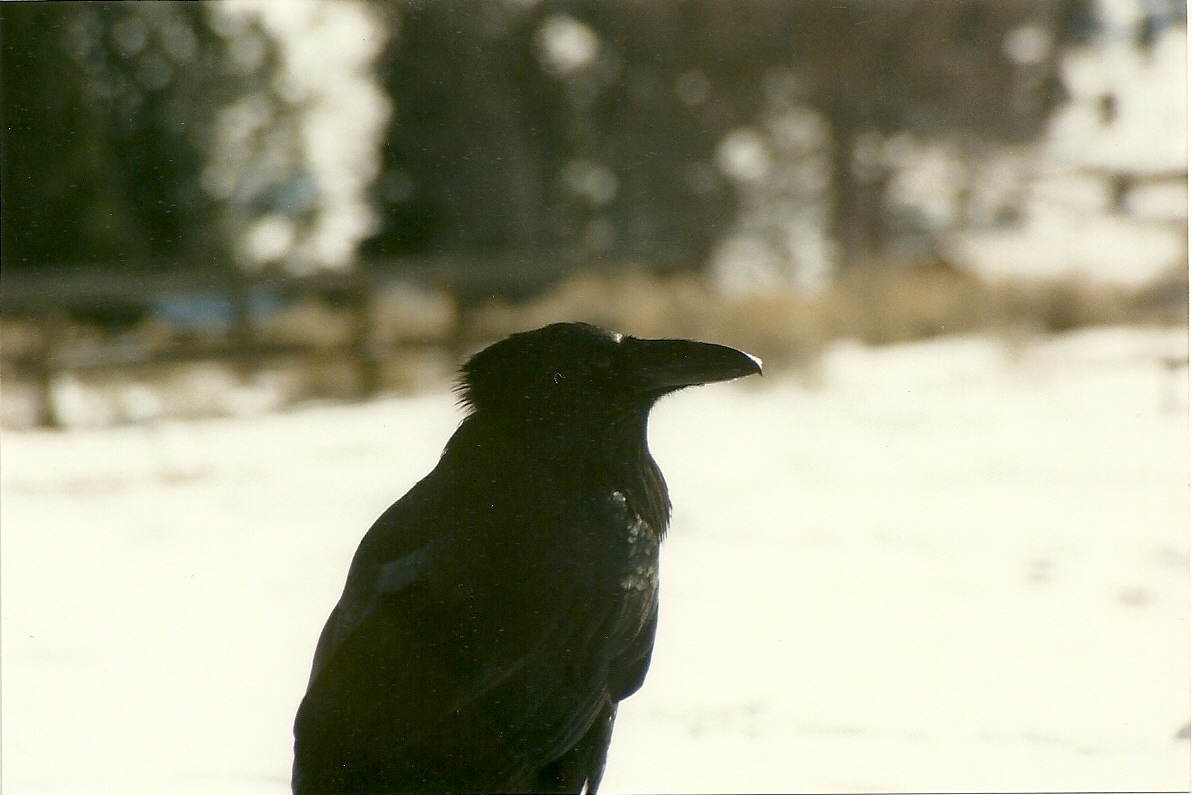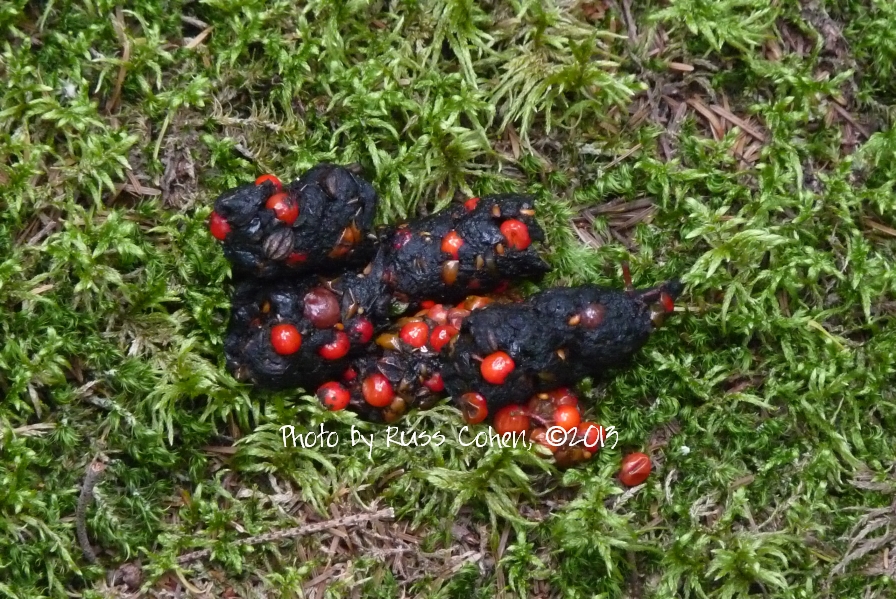Welcome to the first Windows on Wildlife post! If you have a recent post about wildlife you’d like to share – it can be anything: birds, insects, mammals – scroll down to the end of the post and add your site! Please don’t forget to link back here (I’d love it if you’d add the Windows on Wildlife button on the sidebar to your post) and visit other blogs that have article to share. Thanks for stopping by!
I was working at my computer last week when Obo came in to tell me about the raven. He didn’t know what it was at the time, but called me outside to hear a ‘weird noise’. It was a loud, distressing “caw”, but definitely not from a crow. He asked if I knew what it was, and I had to say no. But I went to get my binoculars, and trotted out of the house to see if I could find out.
The calls, repeated every 8 – 10 seconds (I timed them) were coming from the overgrown power-lines adjacent to our house. By its volume, I could tell the creature making the noise was close by and I quickly waded into the high green growth to try to pinpoint the sound.
As I approached a potential viewing spot, I saw a Broad-wing Hawk dive-bomb a tree (and presumably the calling bird) and then fly away, and two crows promptly did the same thing. Apparently the bird making this constant racket was as upsetting to its avian neighbors as it was to me. Despite locating the tree where the calls were coming from, it took me a little longer to get into a position where I finally saw the raven. It was sitting on an extended dead branch, giving this constant call. Neck extended, it was give a high-pitch (for a raven – they usually have a gravelly sound to their calls) distressed “caaaaaw!”, beak open wide, showing the pink of its mouth and throat.
Why? What is this call supposed to signal? I, who am a proponent of leaving wildlife alone and letting nature take its course, wanted nothing more than to help this creature who seemed to be asking for someone to do just that. I stood transfixed for what must have been a full 10 minutes, putting my binoculars up and taking them down again, unable to take my eyes from this large, beautiful bird who was perched on a thin branch and calling over and over. My silly little human perception was of a creature looking for something it knows is probably lost forever – a mate perhaps, or a nest of babies.
As the raven didn’t seem in a hurry I finally decided to go and get my phone and try to record some of the calls. But when I turned my back on it and started to walk away, it gave an even quicker, sharper caw, causing me to turn and look back again. The raven was still sitting in the same place not moving, so I started back again to the house. But when I turned to leave a second time, the raven did the same. I heard it caw once or twice further down the power-lines, but it didn’t stay and continued on, quickly out of earshot.
I left with a heavy heart, feeling like I was supposed to have learned or done something, but I didn’t know quite what. It left me feeling sad, and I don’t know why.
Later that evening I researched everything I had on ravens to determine if this type of call was common or not (’cause that’s what I do…). I’ve spent casual time around ravens in the past: they nested at two different camps I’ve worked at and I got quiet accustom to their calls and movements over the seasons. And the 10+ days spent at Yellowstone provided more intense raven-watching experiences. None of my previous encounters with ravens have made me aware that they ever made such an unnerving, distressing call. Never mind making one over and over again, when there were no other ravens present (at least not that I was able to hear or observe).
From my reading, the closest call I could identify with this was the juvenile begging sound, meant to produce a meal from adult ravens. It’s possible that this was a juvenile raven out on its own for one of the first times and was disoriented and away from its family members. Ravens and crows are gregarious birds, and in fall and winter nest in large flocks together each night – sometimes numbering in the dozens (or more).
On the Cornell All About Birds site, I listed to a variety of raven calls, one of which came close to what I heard (I did manage to record one call later that evening when the raven returned for a few minutes, which I used to compare with the audio on the Cornell site), but still not quite the same. All of the sounds on the Cornell site sounded familiar to me – what I heard last week definitely wasn’t. Which brings me back to the juvenile idea – some juvenile birds need to ‘practice’ their calls in their first season, before eventually getting it right. But I’m still not convinced this is the only explanation.
Has anyone else ever heard this loud, high, distressed “caaaw” from a raven? I’d love to know what it was trying to communicate.
Don’t forget about our book giveaway – it ends Wednesday, June 6th!



And now I want to know what happened to the raven! I’m not sure you could have done anything, but I can understand why you left with a heavy heart.
That’s so helpful to hear – I felt a little silly writing about that, but that call was so sad. I talked to a friend of mine, and she agrees with the juvenile theory. I’ve been keeping an eye (and ear) out for ravens along the power lines, but so far none have made an appearance while I’ve been around.
I have never heard nor seen a raven..but how interesting … it is hard to know during breeding season that could be going on..but even if you thought it needed rescue..getting it would be a problem..my rehabber friend would have said to leave it and see if the parents returned..hard to see but interesting…Michelle
Hmmm… definitely hard to say. I didn’t think the bird was in physical duress at the time, but if it was a stranded juvenile who knows. It was able to leave under its own power, so I’m hopeful that it found its way back to wherever it had come from.